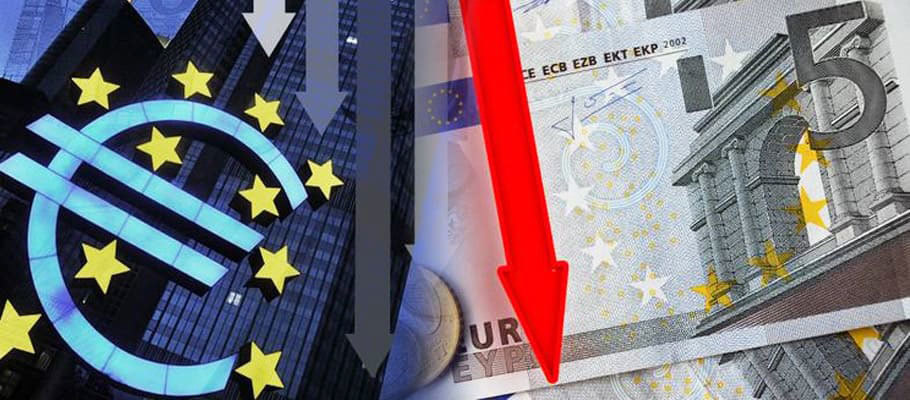
Published: May 10th, 2023
The Euro underwhelmed against all its G10 peers except for the migthy Dollar for the seven days leading up to Tuesday, 9th May. EUR only rose in relation to the Brazilian Real, Turkish Lira and Chinese Renminbi on the broader G20 table, however some analysts believe it could stay a laggard for the near term.
EUR started experiencing losses when European Central Bank (ECB) President Christine Lagarde said last week (wc 1st may) that interest rates would likely be raised again soon, at least until Frankfurt policymakers believe that their monetary decisions have become restrictive enough to send inflation back down to the central bank’s two per cent target.
The Euro experienced further declines when German state statistics agency Destatis announced that the country’s manufacturing orders fell more than 10 per cent in March, the biggest one-month decline since the onset of the pandemic. The print followed a Eurostat print which indicated that European retail sales dropped a full percentage point in the same month.
An analyst note from Nomura in London said that the broad EUR rally underway since last week ‘is done. EURUSD seems stuck below 1.1100 and most EUR crosses have recently spun lower.’
Whether or not the most recent economic data proves that a downturn is underway remains to be seen. Nomura says, however, that investors have realised the risk and may now be pricing-in a negative direction of travel, particularly as the ECB has unleashed its most hawkish monetary tightening on record. Traders will be watching to see what the impact will be on the Eurozone’s real economy.
That makes Europe's economic data calendar particularly important. A cascade of negative signals from the EU’s biggest economies could trigger forex traders to reprice their outlook for ECB interest rates.
It's not the first time that EUR has been on the back foot against the Greenback this year. Forex analysts at MUFG said in February that USD’s ongoing comeback wasn’t being hindered by risk-off sentiment, or trader concerns about signals from the US Fed’s open markets committee.
As investors shrugged off PCE deflator data due the same week, MUFG said markets might be witnessing the return of Dollar dominance.
‘The upward adjustment to a higher terminal rate and cooling rate cut expectations for later in 2023 have spurred new life into the strong USD trade we saw at the end of 2022,’ says MUFG’s briefing.
Adding wind to USD’s sails is a lifting of investor expectations about the timing of the Federal Reserve's peak interest rate hiking cycle.
In January, consensus had the last rate rise set for March, but an additional two hikes have since been added to the table.
The likelihood of a rate cut in the latter part of 2023 has receded, giving the Dollar support after an underwhelming end to 2022 and beginning to 2023.
EURUSD rushed toward 1.10 in January but fell back in early February as new US economic data flummoxed analysts by sending mixed signals to the market.
An unexpected blend of strong wage data, labour market dynamics, inflation figures and retail sales pointed to an American economy robust enough to achieve the Fed’s above-target inflation levels. EURUSD started to retrace previous gains as a result.
‘Stronger American growth data blended with firmer inflation at the beginning of 2023 has added optimism to markets. Forex traders are now pricing-in a more hawkish outlook for Fed policy’.
Going into March or 2022, spiking oil prices were pushing the Euro toward multi-year lows as forex traders bet that the European Central Bank would delay plans to raise interest rates later in the year.
Prices for Brent Crude surged above USD 130 per barrel in March 2022, the highest level for almost 13 years. Wholesale gas prices meanwhile more than doubled from the previous month on fears that the US and EU were considering an unequivocal ban on Russian oil.
The US did move forward with plans to ban purchases of Russian oil and gas, with other G7 countries following suit. European natural gas prices responded by hitting an all-time high.
In a note to investors, the FX Strategy unit at Crédit Agricole wrote that news of major Western importers considering coordinated sanctions against Russian energy exports sent oil and other commodity prices soaring, especially in Asia.
‘Conjecture around ramped up sanctions in the energy sector has started with a bang. Stocks have tumbled and crude prices are soaring on Asian markets as traders' price-in the impact of a US and EU ban on Russian crude supplies’.
In response to the supply shock, Crédit Agricole said a ‘binary move’ in currency markets was underway, one that favoured the fiats of energy exporting countries. Net energy importing countries, in contrast, would see their currencies take a hit.
In a weekly currency research briefing note, Barclays said at the time that the Ukraine conflict had delivered a negative EUR shock.
‘In the near term, the Euro has scope to trade lower given the potential stagflation effect on the Eurozone. Looking further ahead, the war could compel more structural integration by member states that provides EUR with support.’
The Pound to Euro exchange rate reached 1.2177 in early March, the highest level since June 2016. The Euro to Dollar rate dipped to 1.0857, the lowest level since April 2020.
Economists expected surging oil and gas prices would drag the Eurozone economy downward due to its reliance on Russian gas and deep integration with Russia's energy industry.
In an interview with Bloomberg, an analyst from BMO Capital Markets European FX Strategy unit said that a negative relationship would strengthen between the price of crude oil and EUR/USD.
‘Forex traders will be watching to see how these variables play out. The risk of an all-out EU ban on Russian oil imports will be one of the most important factors hanging over EUR/USD.’